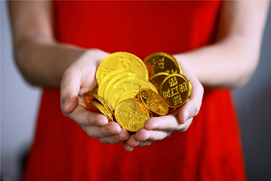Why No International Standard Unit For Value?
Thursday, 08 March 2018By Shann Turnbull
This article was contributed by Dr Shann Turnbull, Principal of the International Institute for Self-Governance.
Neither current Blockchain money nor official money is fit for the purpose of defining economic value or for sustaining life on earth. Both are too complicated. We have standards for weights and measures but the International Accounting Standards Board has no standard unit of value!
Technology now allows: (a) money to be simplified to be only a medium of exchange, (b) economic value to be automatically defined by the ability of humanity to sustain life on earth without consuming non renewable energy resources, and (c) a medium of exchange to be created on a decentralized basis with a negative interest rate so it is no longer a store of value or source of inequality and exploitation. Real assets that sustain life and well-being would provide a superior way to store value.

The concept of economic value is a social construct created by humans. There is no official money that can be defined by any one or more specified goods or services. Money has become disconnected from reality. Astoundingly, disconnected money is used to price real assets for their supposedly “efficient” allocation. But how can this belief in market efficiency make any sense if money cannot be defined by anything real? Is this belief a religion and/or are we insane?
Even if the value of money was defined by a basket of commodities, why should efficiency be the paramount criteria for asset allocations? Efficiency becomes meaningless if humans cannot sustain their wellbeing on the planet. There are many more important criteria for allocating resources such as surviving pollution, extinction of flora and fauna and climate change.
Modern societies are crucially dependent upon energy. Energy can provide the essentials of life like clean air, water, food, clothing and shelter. Sustaining life in any region of the planet becomes dependent upon the ability of each region becoming dependent upon access to benign renewable energy. A sustainable global population depends upon the capacity of each region to service humanity from only benign renewable sources.
The Internet of Things (IoT) allows an index of sustainability to be automatically determined from the efficiency of investment providing benign renewable energy from local sources and the dependency of the host bioregion on using such energy. Data on the efficiency of consuming the production of renewable energy from the installed capacity is already collected. Data is also available on the reliance of each region on renewable energy. The most efficient and dependent regions would obtain the highest index of sustainability.
As renewable energy technology has a life of from twenty to hundred years, a five-year rolling average of its efficient and dependable use would change only slowly and in a predictable way even if major breakthroughs in technology arose. This makes the sustainability index an ideal anchor for defining the value of a medium of exchange. The most sustainable regions would obtain the most value for trading with others.
The stability of the index would exceed any current official or current crypto currencies and so it would promote investment. Official currencies are subject to unpredictable, unknowable, complex political and economic variables. Official currencies are subject to official manipulation or offhand remarks by political leaders as well as unofficial manipulation by bankers, hedge funds and speculators.
It would make compelling commercial sense for trade or investment contracts to use the sustainability index of value, rather any official or crypto-currency to minimize uncertainty. Such contracts could be created by anyone anywhere. Financial innovators could then use credit-insurance to allow such contracts to become publicly traded. The cost of the insurance could be attached to the contract to create privately issued cost carrying money. This type of “negative interest” money emerged in Europe and the US during the Great Depression.

At that time it was issued as paper money that typically was only valid for one week. To maintain its validity users had to affix a stamp to the script each week purchased from the issuer. A stamp of two percent of the face value of the scrip meant the after 52 weeks the issuer had collected 104% of the face value. This allowed the issuer to redeem the money with a 4% profit. Digital money and the Internet now make this type of money practical again. Even without a Great Depression it is now circulating again in Germany . It circulates much quicker than official money because it has the human attribute of “use it or lose it”. For this reason I refer to it as “ecological” money in my writings.
Additional details are in my conference paper. My paper answers in the affirmative the question in its title: “Is a stable financial system possible?” It concludes that sustainable indexed ecological money would:
- Establish a medium of exchange with a stable predicable value;
- Recognize only indirectly, over the longer-term, changes in production, consumption or technology;
- Avoid manipulation by speculators;
- Reduce the cost of the financial system;
- Eliminate a financial crisis in one region spreading to another;
- Eliminate financial instability within each region;
- Eliminate inflation created by excessive money creation;
- Create incentives for investment in benign renewable energy and storage systems;
- Reduce and/or eliminate the need for carbon taxing or trading;
- Encourages the location and size of the population in each region to become sustainable in perpetuity.